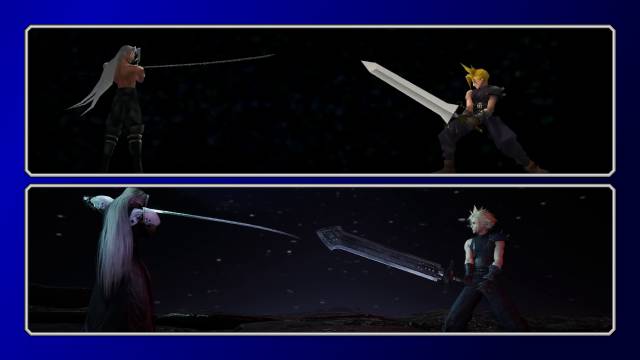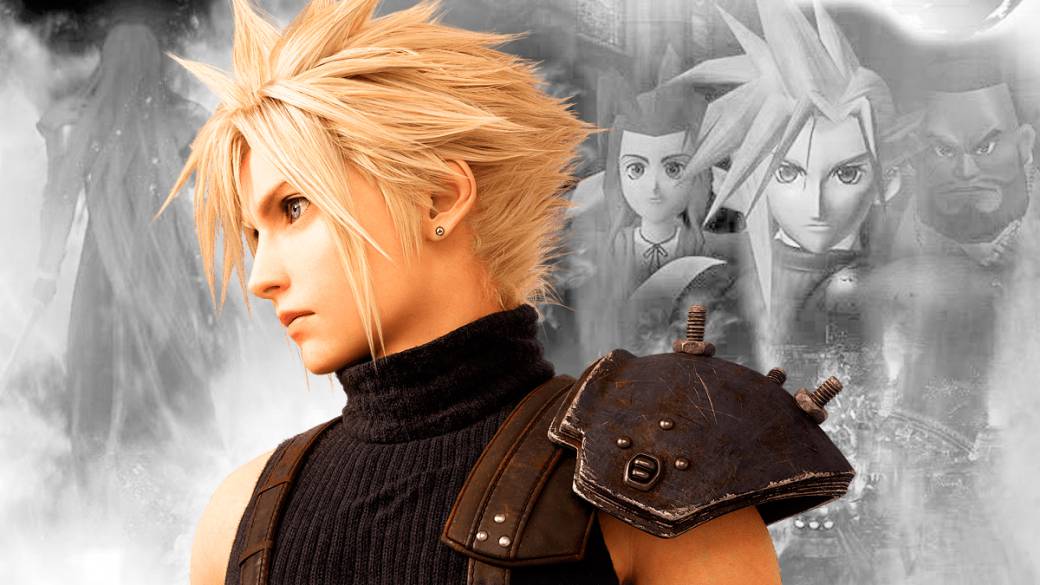
The Final Fantasy VII remake is already with us. We delve into his address changes with an article loaded with spoilers.
Although over the years we have seen both lots of remakes and countless requests to reimagine games even without them, there has always been something special about the possibility of rebuilding Final Fantasy VII. Originally launched in 1997, the Squaresoft JRPG marked an era in several senses of the word, marrying a powerful narrative with spectacular sequences, highlighting the advantages of the CD format – with great repercussions for the contemporary consolation battle -, recording in millions of memories its anthology soundtrack and catapulting interest in the genre beyond Japanese borders. It was, for many, the awakening to a new type of interactive experience, deep in playable possibilities, but also epic on an emotional scale. So despite the subsequent arrival of VIII, IX or X, as well as multiple exponents of success in other sagas, VII remained in the collective consciousness as the quintessential JRPG for capturing the right ideas at the right time in a way that was impossible to replicate.
And Square knew it. Among all his works, the magnetism of FF VII was unrivaled. The adventure of Cloud and company received spin-offs, prequels and even a sequel in the form of an animated film with high production values. But none of that rivaled the jackpot: the remake. In 2005, coinciding with the presentation of PlayStation 3, Square added fuel to the fire with a technical demo of the intro. It was just that, and then the company proceeded to work on unreleased installments for the console. But the fans did not forget. And for years, they asked. Until just a decade later, in 2015, Final Fantasy VII Remake finally became official. The wait has been long, even since then, but now that it is finally for sale – or at least its first part – the scrutiny is inevitable. Last week we published the normal Reviews, with a multidisciplinary and gut-free approach. Today, with several days of rest, it is time to delve freely into the changes and consequences of this new visit to Midgar. Now we do go with SPOILERS! (from both Remake and the original VII).
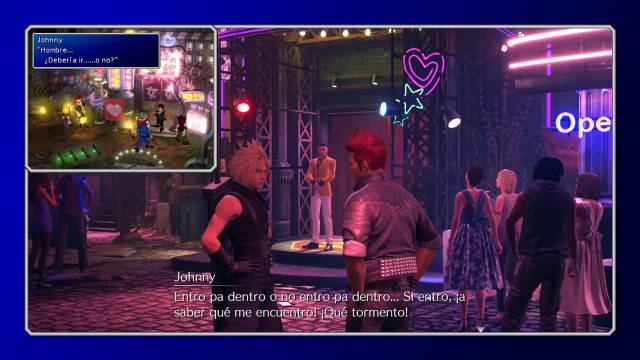
Remake: The Need for Early Climax
The most obvious departure change is the decision to limit the first installment to Midgar's own events. This section, originally less than 8 hours long, has gone from being the start of a much bigger adventure to a complete game with introduction, knot and ending with a cut to credits. This means that already present events need to be expanded and incidentally require adding others to create new connective tissue. But it is also necessary to rethink the structure to achieve a closure that, although temporary, must be satisfactory and relatively conclusive on its own. The positive part is that Midgar, despite its initial brevity -at least in comparison-, bequeaths a dense, varied development and with its own climax before opening the rest of the game. From that point of view, and once decided not to cover the entire epic in one game, drawing the separation there is a logical move. The most questionable part is that the new creative direction has deemed it insufficient to keep the Shinra megacorporation as the central antagonist until the end of this arc despite being its original and natural place, creating a backward cascading effect that alters in a dosed but perceptible way. all development.
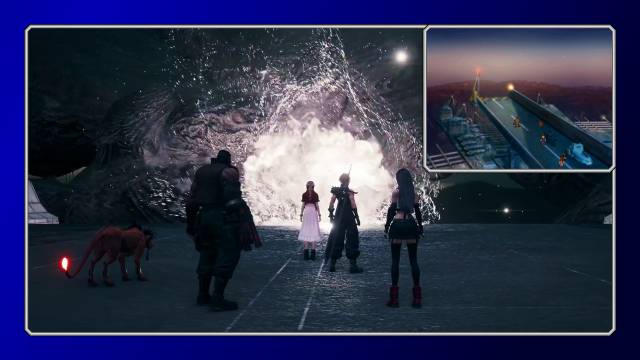
Jessie and the value of grief
So let's go step by step, before diving into the finale and its possible implications for the sequel. Because for the most part, FF VII Remake is a faithful adaptation of the adventures in Midgar that uses both its greater extent and technological advances to recreate locations in great detail, humanize the characters and capture the everyday nature of the slums before the conflict escalates to tragic heights. One of the best early examples of this, perhaps the best, is the expanded role of Jessie, the chatty component of Avalanche who participated with Cloud and Barret in the assault on the first mako reactor and then practically disappeared until his later death during the destruction. from sector 7. Like Biggs and Wedge, also with expanded roles, Jessie served to give the reply to the protagonists, show Avalanche as a group with a well-defined organization – she was the mechanic in charge of manufacturing the bombs – and have casualties with its own name to give more weight to the destruction of the sector despite the survival of the main protagonists.
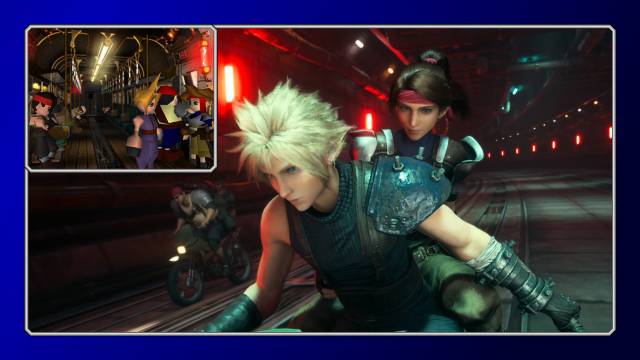
Naturally, those roles persist in the remake, but Jessie in particular takes advantage of the split to fill the gap left by Aeris's temporary survival – or not, we'll come back to this – to some extent. Her increase of lines during the assault that opens the game leads to a playful and innocuously romantic dynamic with Cloud that culminates in a chapter where we visit her home and discover her background as an actress before her father's illness pushed her towards him. activism. FF VII, the original, was a game with an obvious ecological message, but also one spun emotionally through loss and mourning. Each and every one of the main characters have suffered or suffer some kind of loss during the course of the game, be it at the most literal level – the death of a loved one – or in a more symbolic way – the loss of identity and belonging to the world-. The murder of Aeris, as well as important for reasons of argument and to reinforce the figure of Sefirot as a villain, was a carefully orchestrated event so that the player feels that he is losing something of his own. Hence its effectiveness and significance both in the internal context of the game and as a cultural legacy that now prevents reserving that surprise for novice players.
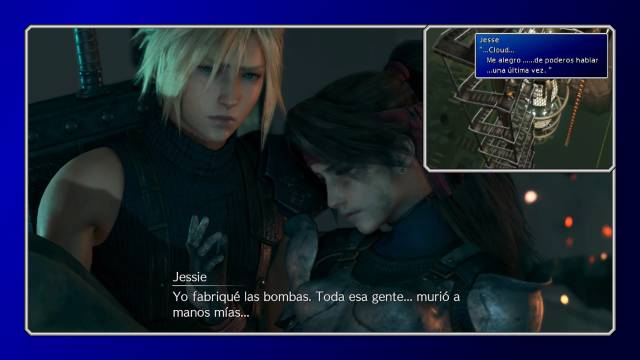
Among the remains of Don Corneo
Unfortunately for the new Jessie, there are two factors that work against her despite the fantastic work with the script, the acting and the animation. The first and most important is that the remake still has to do the background work with Aeris, although in this installment it has not yet reimbursed all the benefits. The second, that the narrative ends up putting among its appearances a quantity of land that does not trivialize, but does dilute its arc somewhat. After a full chapter with her in front, the attack by the mysterious Echoes – again, we'll come back to this later – prevents her from participating in the assault on the second mako reactor, thus keeping her off-screen for hours and hours of plot development ( seven chapters if we are exact) and then recover it just in time for its sacrifice in the pillar of sector 7. It is a consequence derived from the need to mark a series of boxes from the original game, but also from the progressive oversizing of events that did not exist in the past. Or were they just references to pick up later.

To clarify that this is not a problem – if you want to see it as such – born within events that separately, as in the case of Jessie, clearly enjoy more attention and care than their 32-bit equivalents. The impact on the rhythm arises from juxtaposition. Of recreating or chaining moments that pile up even when the narration tries to sell the same urgency that exists in the source of the adaptation. Probably the clearest example of this disconnection takes place just before and after the visit to the Don Corneo mansion, Ecuador between the two halves of the game. The stay at the Muro market was one of the most memorable sections of the original, and the remake strives to enrich it with much more content and wacky situations. The steps to enter the mansion in the past (cheer up the local tailor, do push-ups in the gym) have now become optional tasks, and instead the main development introduces a new network with characters that we must convince to deliver their letters to us of recommendation.
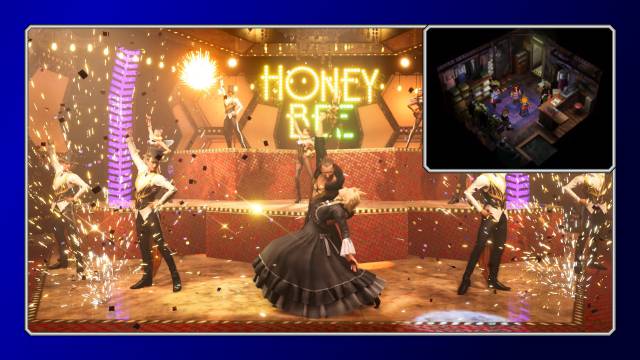
This reformulation gives rise, among other things, to a coliseum and a delirious dance minigame, which is the kind of frivolity that also characterized the original when it did not seek to create tension (who does not remember Hojo sunbathing among girls in bikini? ). And, an important nuance, it fits in the context of helping Tifa, who in the remake explains her plan in advance and does not even require the level of urgency that the game later acquires when Don Corneo reveals that Shinra is about to destroy the sector 7 dropping the top plate over the Avalancha members' neighborhood. On PSX, this leads to a quick tour of a couple of brief areas, the sewer Don Corneo drops us into and the adjacent train cemetery. On PS4, technically, too, but both zones become larger dungeons, the number of bosses scales from one to three, and even a new ghost subplot is introduced that perhaps outlines Aeris' past a little better, but it's totally detached from the central objective at that moment of the adventure.
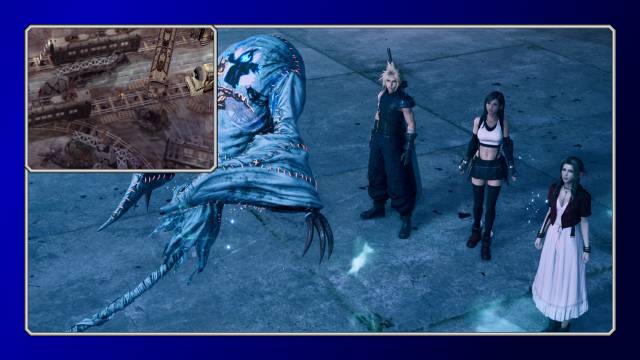
Redirected restriction: Biting without teeth
It is impossible to pinpoint the exact point at which to say that Remake accuses Midgar's conversion to full play is no longer perceived as cynicism because it will vary from person to person. In some cases there is not even such a point. But after the destruction of sector 7 it seems difficult not to notice that something is happening, especially since here the study shows a restriction that it does not have at other times and considerably reduces both material and human damage: Wedge, once lowered from that event , survives and helps Aeris to evacuate the area before the collapse, which results in the subsequent reappearance of multiple secondary schools with their own name and the idea that the neighborhood is already beginning to rebuild as the protagonists venture beyond Midgar. It is not a minor change, and it is one that also affects development when, after Aeris's kidnapping in the midst of chaos, his mother insists on not rescuing her so that our heroes visit the ruins – tragic and effective scene, we insist that the game very seldom fails in the singular moments – and incidentally they traverse a new dungeon that takes us back to the starting point without advancing the plot more than a few millimeters.

This trend continues with the return to the sewers under the Muro market, again at the hands of an unpublished subplot that will surely have relevance for a future game –both due to the reappearance of Don Corneo and Leslie–, although here it continues to delay a before almost immediate ascension to the Shinra building. Already above the game does channel towards the climax with pending exposure, some tributes and the brilliant staging of which it constantly shows – let it be clear that the intention is not to complain, but to point out consequences of the change of focus! – , but not before diving into a long journey through the new mansion of horrors of Dr. Hojo. But it is upon arrival at the office of President Shinra when all the masks definitely fall off and Remake begins to clearly reveal his plan through the appearance of Sefirot, who this time not only assassinates the president himself in front of the protagonists – in the original it happened off camera, before his arrival–, he also skewers Barret like a Moorish skewer. Although the shock lasts little because, after overcoming a combat, the Echoes reappear and heal him.

Echoes and Metanarrative: History as Reaction
Before descending, now for the final burrow, it is worth taking a second to remember the truism that the original FF VII was an expressive work. Be it more superficial or deeper, the game addresses the themes and emotions that the authors deemed appropriate, and that later became part of the audience to create a breeding ground from which Remake now springs. This means that yes, the new game is again an expressive work, but it also has a high reactive component. As if it had not been clear until then, the title is not limited to narrating the already known events with some extra flourishes, it also actively comments on the expectations of the fans, which are manifested through the Echoes. These hooded wraiths appear at various times to make sure the story doesn't stray. It is they, for example, who injure Jessie when the game pretends not to take Cloud to the second mako reactor, thus facilitating his encounter with Aeris in the church. Or those who later allow the Turks to destroy the pillar of sector 7 despite the fact that they almost seem defeated.
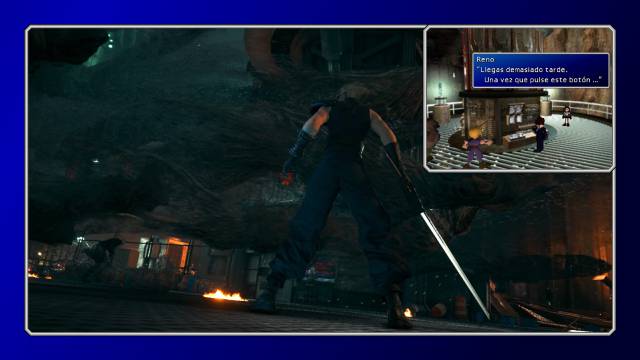
Within the game universe, its presence is attributed to the life of the planet, which has its own will and tries to lead the characters along the path that leads to the same conclusion as the original. An eminently meta-narrative resource because the performance of these Echoes is linked to purposely rewritten events to subvert expectations and justify their presence: they attack Jessie because first the script causes Barret to dispense with Cloud for the mission, they cure Barret because he is put within reach Sefirot when it was not the case before, etcetera. Depending on its future implementation, this new vision of destiny could recontextualize the original, since it would move the locus of control from an internal position to an external one. Furthermore, the new direction also implies that the predefined course leads to a negative outcome that must be avoided: during the fight against Omen, the final manifestation of fate, the protagonists have visions in the form of flashforward towards events that theoretically should occur in the second –Or third– part, but they are interpreted lively as a failure, so they defeat the creature to free themselves and write their own future.
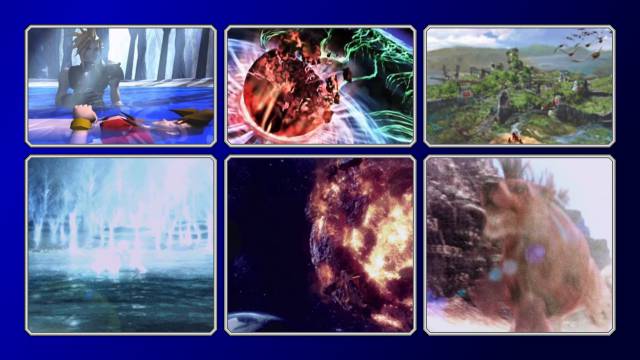
Remake 2.0: Aeris (No) Will Die
Surely there is no need to specify that if the Echos equals the fans who treasure the original story, during this battle the group of heroes represents the creative leadership of the project fighting symbolically – and not very subtly – to achieve a greater degree of freedom in the development of the following installments. Final Fantasy VII Remake is not, therefore, a remake in the traditional sense of the word, but a new game that overlaps on the original and acts as a pseudo sequel in a similar way to the Evangelion movies regarding the series, which It also needs as a supplement to use it as a shortcut to save narrative exposure. The upside for purists is that what happened on PSX has already happened and is not going to be erased. Although in a somewhat more cryptic way, the creators themselves make sure to introduce Zack's survival, which is also linked to the defeat of destiny at the hands of our heroes, but it has an effect on a timeline –or dimensional– different from that we are playing during Remake, thus evidencing the existence of several planes, universes, whatever, among which logically is the 1997 game.
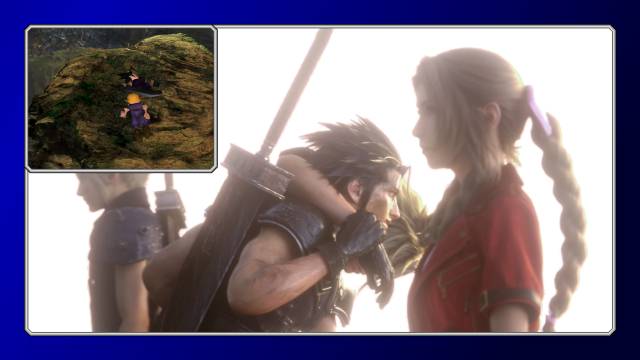
Needless to say, this opens its own thunder box, as from now on the studio doesn't just have carte blanche to alter key events like Aeris's death, or reintroduce a Jessie whose headband we can see on the table alongside to which Biggs recovers during the final sequence. You can also cross different universes, something that is already evident in this installment through the implementation of a Sefirot that definitely knows more than the original, appears from almost the beginning and plays in another tone with Cloud, which he sees more as a potential ally than as rival. The fact that the studio squeezes their confrontation so prematurely, and even the imagery of the final duel on the horizon of creation, is an almost unequivocal sign that they have other plans for the future of these characters. It is both a genius and a recklessness whose results can be disastrous, but which can only be appreciated in the long run, when we see the whole picture. At the moment it is time to accept that Remake is no longer such and that, as the phrase before the cut to credits advances, from now on we enter a new Final Fantasy.
